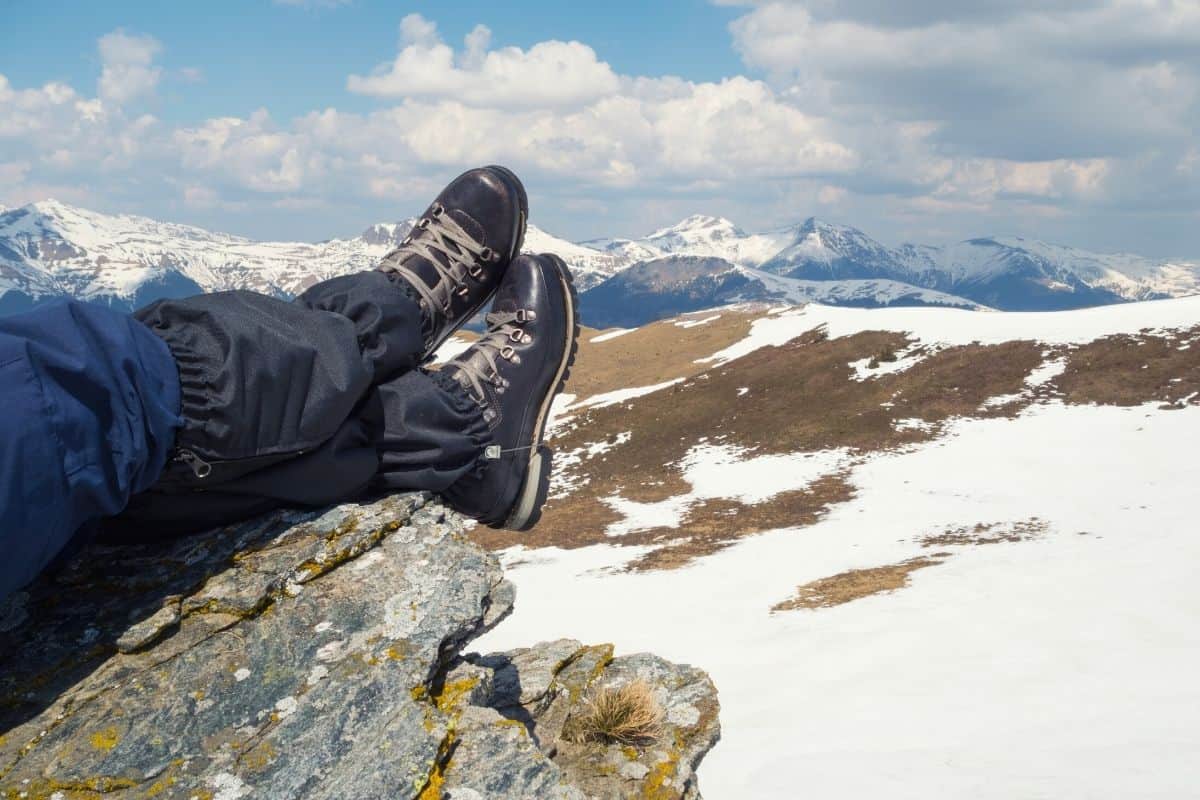Hiking boot manufacturers are not immune to a bit of exaggeration when it comes to touting their products’ benefits. Their almost uniform “out-of-box comfort” claim, moreover, could leave many of us believing that the days of having to break in stiff, nippy new trail clogs is a thing of the past.
Anyone who has purchased hiking footwear since this tag started appearing around ten years ago, knows that (in most cases) such claims are, well, a load of hooey.
Table of Contents
Why Break In Your New Hiking Boots?
The relationship between your hiking footwear and your feet is like any other – for it to work, you need to get to know each other and adapt to each other’s idiosyncrasies.
Should you dismiss this step as unnecessary foreplay and try breaking in hiking boots on the hoof (during a hike, that is), you run the risk of a number of afflictions. These include foot cramps, blisters, and painful pinches where the material hasn’t yet “given” to the form of your feet.
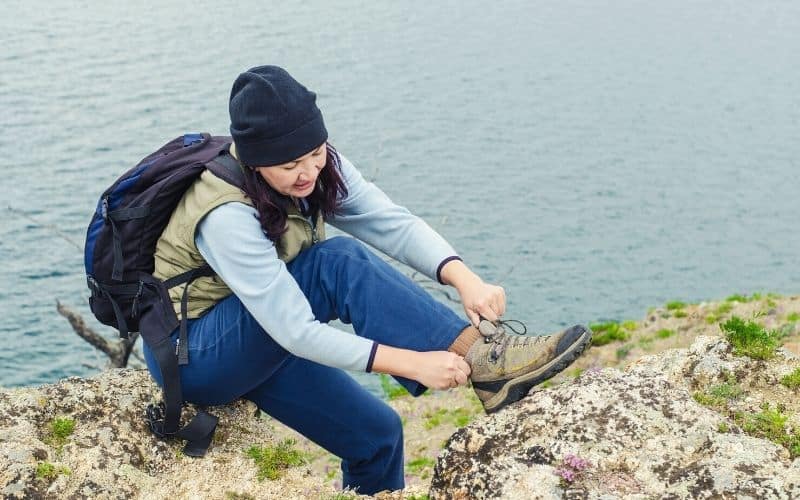
Different models take different lengths of time to wear in. A lightweight synthetic boot may indeed feel almost sneaker-like straight from the box and wear in during your first outing, whereas a pair of stiffer leather boots or 3/4-season models may require weeks or longer.
That’s the problem. Below, we’ll take you through the steps you need to take so you know how to break in hiking boots fresh from the box.
How To Break In Hiking Boots: 3 Steps
1. Start Off On The Right Foot: Buy The Right Boots
As the old adage tells us, there’s no point in flogging a dead horse…
While breaking in a new pair of boots is a necessary process and will help to make well-fitted ones more comfortable, it won’t magically turn an ill-fitting boot into a soundly fitting boot.
As such, the most important step you can take towards successfully breaking a hiking shoe in is choosing the right one at the point of purchase.
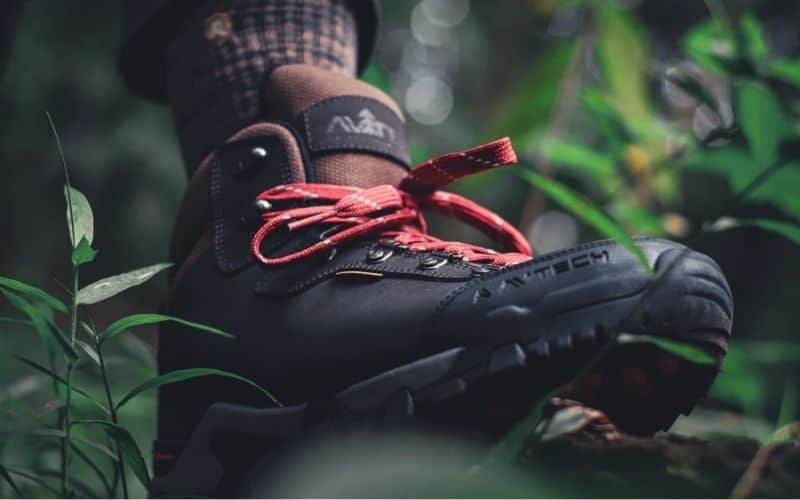
To do so, we recommend already being armed with an awareness of your feet’s quirks and characteristics before you get to the store. If they are particularly wide or narrow, flat, have a high instep, bunions, and so on, you need to find a pair that will comfortably fit your own particular foot shape.
At this stage, diagnosis of potentially painful footwear is tricky, but there are a few tell-tale signs that a boot might not be a good fit for your feet or will take longer to break-in. These include rubbing around the forefoot, tight or painful spots in the toes and heel, or lack of flexibility in the fabric or materials.
2. Take An Incremental Approach
However comfortable your footwear may feel in the store, the best policy is to gently break them in, bit by bit.
Wear them around the house with the same socks and insoles you’ll be using out on the trail for at least a few evenings. At this point, don’t rush back to the store if they don’t feel slipper-like just yet, factory stiffness takes a little time to ease off. Leather, in particular, can take an age to soften and become more supple.
Even the best-fitting leather footwear will feel stiff at first, cause a little bit of foot pain, or rub against the skin. However, unless you feel fiery hot spots developing, don’t take these as a sign that you’ll be better off with another model.
Next, try venturing further afield by wearing your brand-new footgear on a gentle walk or two around town or the park. The more you do so, the sooner they’ll be ready to hit the trails.
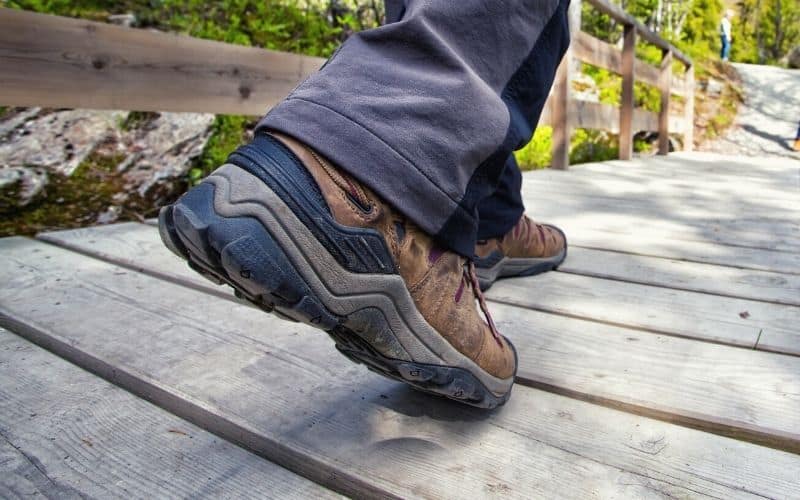
Before you head to the hills/mountains/wilds, a useful final step of the breaking-in process is to load up a backpack with around the same weight you carry on a hike. Take your pack and new boots for a trial run around the local park or on a city walk that covers a few miles and takes in a few sizeable staircases. This will help to prevent blisters that may be caused by the added weight pressure of your pack placed on your feet.
Finally, get out and hit the trails. Even this, however, should be done by degrees. It would be unwise, for example, to set off on a 3-month thru-hike in your new clogs before you’ve treated them to a few lengthy day hikes or weekenders.
3. Put In The Time
There’s no quick way to break in boots.
While some self-proclaimed authorities on the subject advise wearing them in the shower, giving them a daily rubdown with wax, leaving them near a heat source, and/or giving them a good soaking before heading out on a hike, each of these supposed remedies is only likely to result in damage to the materials, or to your feet.
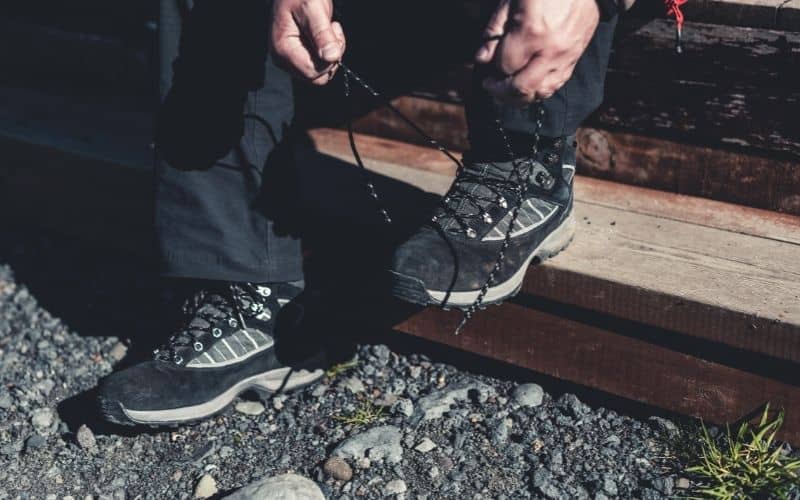
The only solution to stiff, nip-prone or pinching footgear is to accept there is no solution other than getting them on as often as possible until those discomforts ease off as the boot material gradually conforms to the shape of your feet.
These Boots Were Made for Walking…
Nothing puts a dampener on a good day hiking more than a nippy blister or aching feet. And, although you won’t know how long to break in hiking boots for when you first get them home from the shop, it is well worth persevering with. Taking the time to break in your new hiking boots is going to pay dividends when you do get them out on the trail for real and hopefully, with the help of our guide, you can make that commitment to your feet!
If you liked the article, let us know in the comments below! We would love to find out if you learned anything. And, if we missed a special trick, don’t forget to mention that too!
